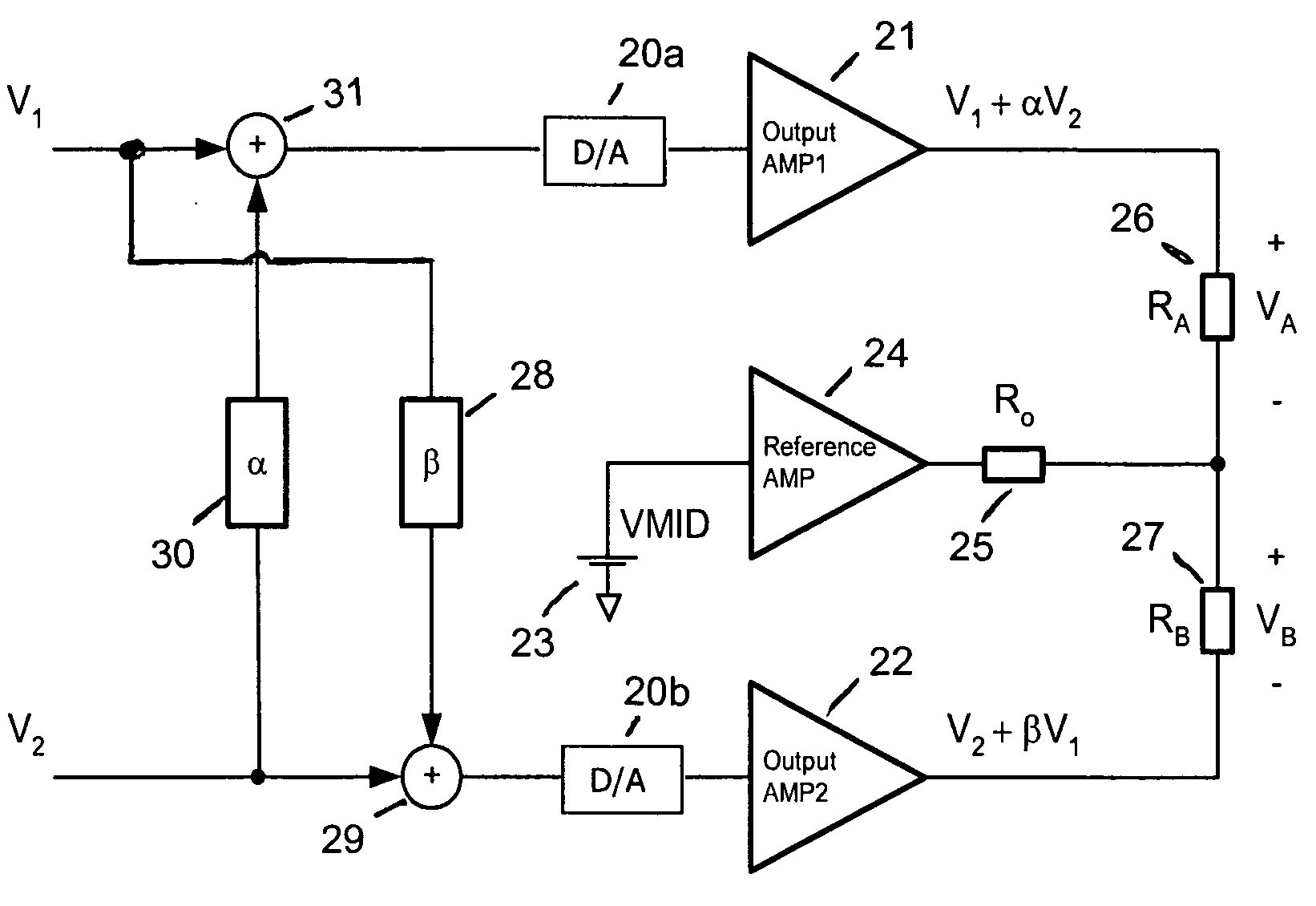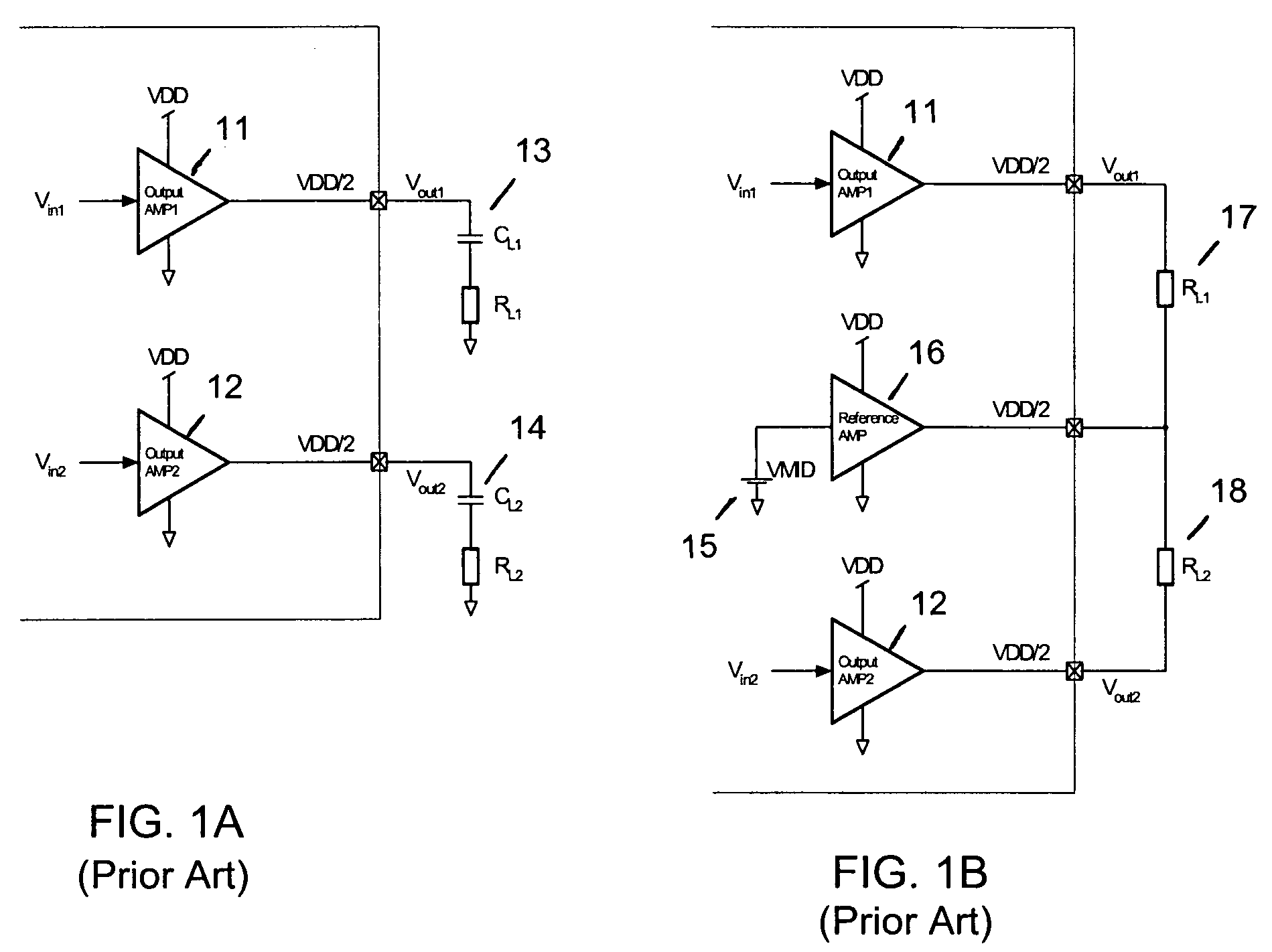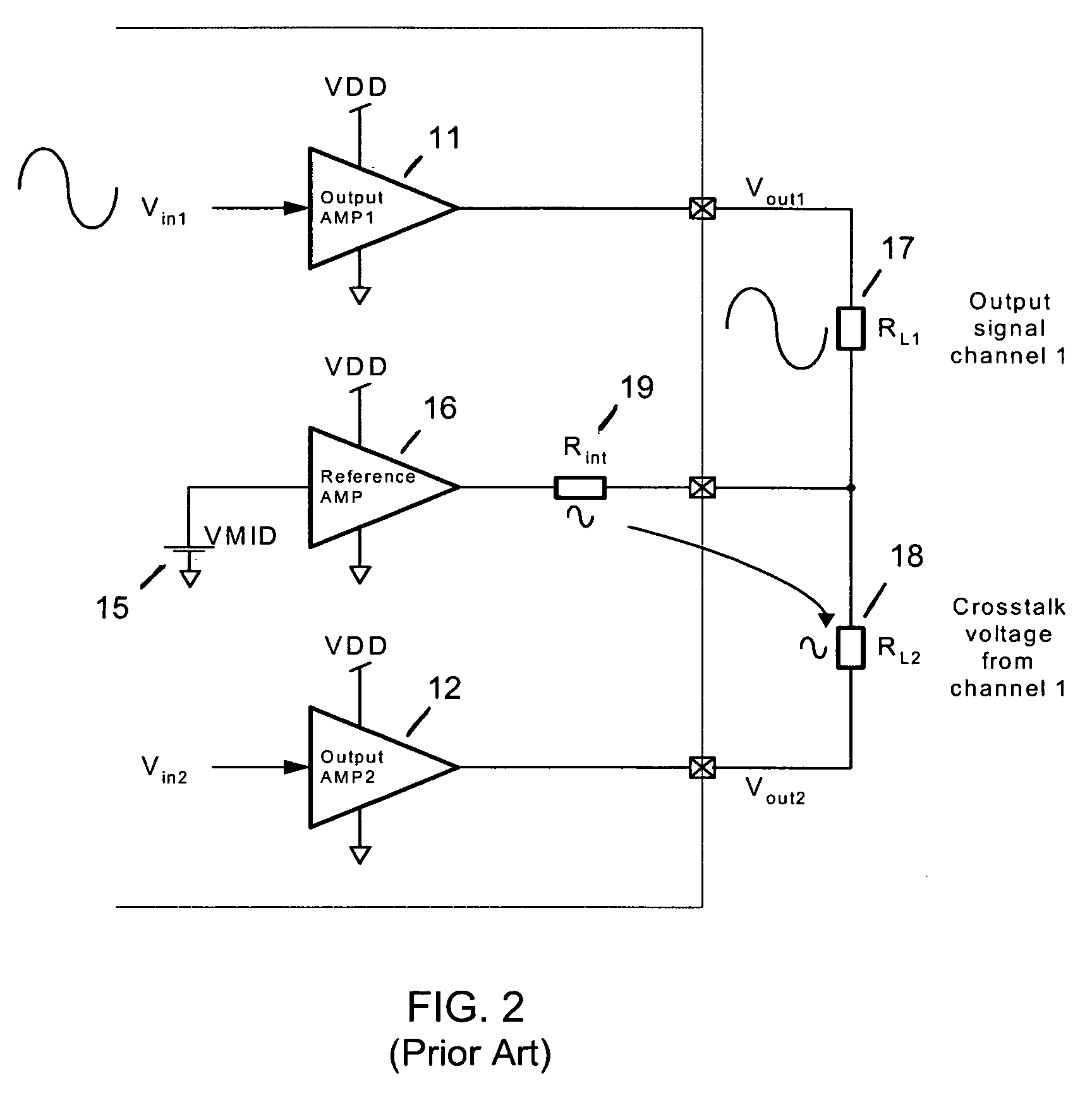Crosstalk cancellation using load impedence measurements
a technology of load impedence and crosstalk, which is applied in the field of system for amplifying electronic signals, can solve the problems of only affecting the amplitude of output signal level, output signal, distortion, etc., and achieves the effects of improving the crosstalk figure, low cost, and indirect improvement of the stability of the reference amplifying
- Summary
- Abstract
- Description
- Claims
- Application Information
AI Technical Summary
Benefits of technology
Problems solved by technology
Method used
Image
Examples
first embodiment
[0026]FIG. 3 is a simplified schematic drawing of an amplifier configuration in accordance with the present invention. In this embodiment, the signal from each channel is added to the other channel on the input of the output amplifiers. The signal VI is converted by a digital-to-analog (D / A) converter 20a and fed into a first single-ended output amplifier (Output AMPL1) 21, and the signal V2 is converted by a D / A converter 20b and fed into a second single-ended output amplifier (Output AMP2) 22. A reference voltage supply (VMID) 23 is implemented as an input to a reference amplifier (Reference AMP) 24. The Reference AMP has an internal output impedance R0 25, and generates a reference signal, which may be a reference DC voltage level. A first output load (RA) 26 is connected between Output AMP121 and the Reference AMP. A voltage drop VA is associated with the first output load RA. A second output load (RB) 27 is connected between Output AMP222 and the Reference AMP. A voltage drop V...
second embodiment
[0036]FIG. 4 is a simplified schematic drawing of an amplifier configuration in accordance with the present invention. In this embodiment, the signals from both channels are added on the input of the reference amplifier. The signals V1 and V2 are split prior to their respective Output AMPs, and are routed through an adder 33 and a gain function a 34. A suitable DC bias, VMID 23, is added to the adjusted sum before voltage V0 is applied to the Reference AMP 24. The Reference AMP generates a reference signal, which may be a reference DC voltage level. Note that the added DC bias may be zero, depending on the values of V1 and V2, respectively.
[0037]Like in the first embodiment, it can be shown that this embodiment also results in crosstalk equal to to −R0 / R=−Rint / RL. The calculations below begin by showing that VA and VB are the signals that will appear over the resistive loads RA and RB, respectively. Without loss of generality, all amplifiers are assumed to have 0 dB gain.
{VA=V1RARA+...
PUM
 Login to View More
Login to View More Abstract
Description
Claims
Application Information
 Login to View More
Login to View More - R&D
- Intellectual Property
- Life Sciences
- Materials
- Tech Scout
- Unparalleled Data Quality
- Higher Quality Content
- 60% Fewer Hallucinations
Browse by: Latest US Patents, China's latest patents, Technical Efficacy Thesaurus, Application Domain, Technology Topic, Popular Technical Reports.
© 2025 PatSnap. All rights reserved.Legal|Privacy policy|Modern Slavery Act Transparency Statement|Sitemap|About US| Contact US: help@patsnap.com



